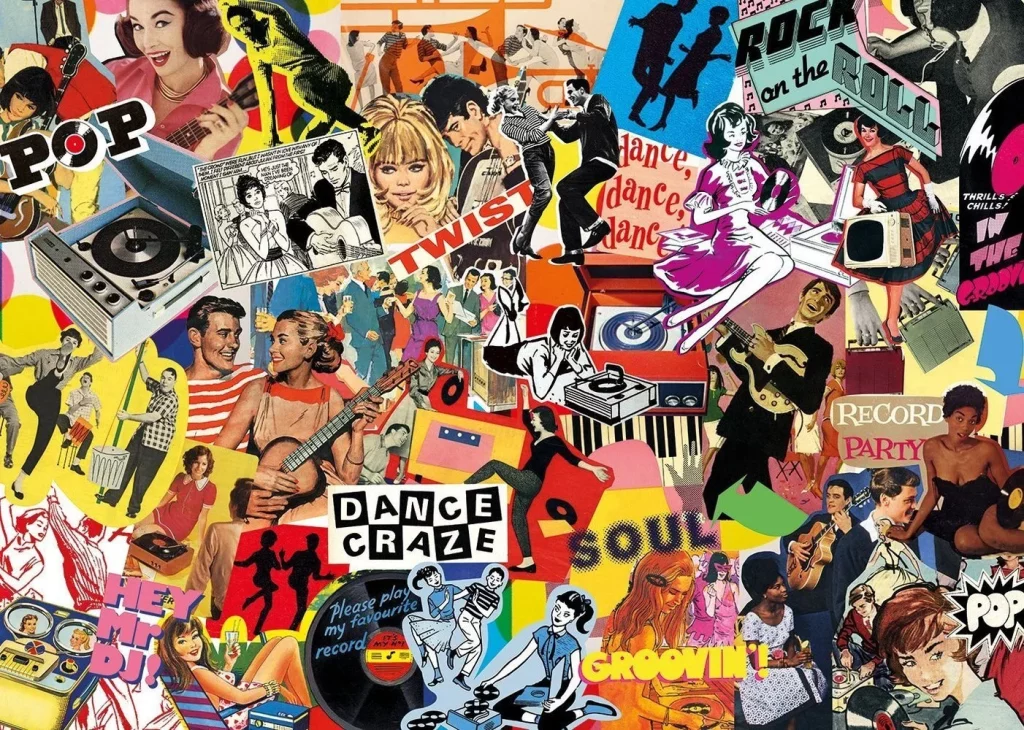
The concept of the culture industry, developed by Adorno and Horkheimer, describes how mass-produced culture is used to promote and reinforce capitalist structures by turning art into a commodity. This post aims to explore the many themes within this theory and how it helps to explain the commercialisation of art through modern streaming platforms such as Netflix and Spotify.
At the heart of Adorno and Horkheimer’s theory is the belief that the media are a tool for domination. They were confident in stating that the production of entertainment pacifies audiences into accepting and reproducing capitalist values without being aware of it. They claim that popular culture, like films, music and television, is standardised in order to appeal to the general public, without the audience needing to use critical thinking skills to challenge it. The theory specifically talks about processes like pseudo-individualisation (known as the illusion of choice) in which the audiences genuinely believe they are selecting choices out of free will and not just absorbing the variations of the product. They suggest that this system ensures that culture assists the economic status quo, rather than challenging it, by keeping individuals distracted and pacified, reinforcing capitalist ideals.

Even though Adorno and Horkheimer developed this theory about the culture industry in the 1940s, there is still major relevance to how the media operates today and how it may in the future. Modern media platforms such as Netflix, Spotify and TikTok still mass produce culture for profit, and use algorithms to determine that. The algorithms promote copycat content that can be easily marketed to the masses, which is eerily similar to the standardisation described by the theorists. However, Adorno and Horkheimer’s view of the general public being passive may not hold up as strongly today as in the ‘40s. This is because of today’s rapidly growing digital culture. Audiences are able to create, remix and share content about their favourite films, TV shows and musicians. An example of this is TikTok, where users are not only taking in content but also have an active part in creating it. This suggests a more participatory and community-building environment than the theorists might have anticipated.
Another modern example is Spotify. This streaming giant helps to shape what audiences hear through playlists and algorithmic recommendations. The Billboard 200 reflects the trends from these platforms, you’ll see artists like Taylor Swift, Olivia Dean and Alex Warren who all create pop songs with similar themes of love, heartbreak and relationships. This mirrors the ideas Adorno and Horkheimer mentioned, like pseudo-individualisation, the songs seem to be unique as they’re coming from different artists, but follow similar marketing patterns and themes. Spotify’s payment model could also be seen as evidence of the economic inequality that the theorists mentioned. The majority of artists receive extremely low pay per stream, whilst the record labels and already established stars dominate the created playlist on the platform. This mirrors the economic hierarchy mentioned in the theory; culture is commodified for corporate gain rather than artistic integrity.
In conclusion, Adorno and Horkheimer’s theory still remains relevant today and reminds us that behind every TikTok uploaded and Spotify stream is a system trying to balance creativity, control and wealth in a rapidly growing digital age.
References:
- Horkheimer, M. and Adorno, T. (2002). Dialectic of Enlightenment. [online] Available at: https://monoskop.org/images/2/27/Horkheimer_Max_Adorno_Theodor_W_Dialectic_of_Enlightenment_Philosophical_Fragments.pdf
2. Spotify (n.d.). Loud and Clear by Spotify. [online] Loud and Clear. Available at: https://loudandclear.byspotify.com
3. Billboard (2025) Billboard 200 Chart. Available at: https://www.billboard.com/charts/billboard-200


Hello, I really enjoyed how engaging and catchy the whole blog post was. I also liked how you explained any complex terms used to make it easier for the readers to understand. Another thing I liked about this post was the colourful picture you used; it really helped me to stay engaged. Your examples were very good, and they really related to how the culture industry is present today, and your arguments were very valid in showing your opinions and understanding of the topic. I think your blog was perfect and nothing could make it better! The only thing I would say you could do better is add a bit more to your conclusion, but overall, your writing is clear and easy to understand.
This was an excellent read! I really enjoyed eye-catching pictures, as they made the content more engaging. You’ve also done a great job connecting their mid-20th-century ideas to contemporary platforms like Netflix, Spotify, and TikTok. The examples of algorithmic influence and pseudo-individualisation are powerful and clearly demonstrate how cultural production remains profit-driven. I also like how you acknowledged the shift from passive to active audiences. This discussion powerfully links classic theory to digital culture, offering clear insights that resonate strongly and are highly relevant. Great Job!